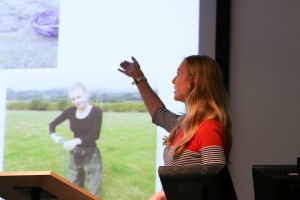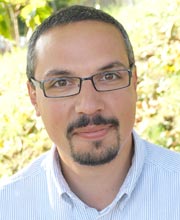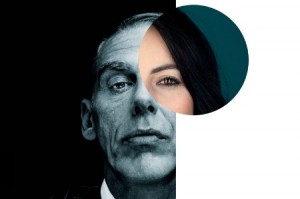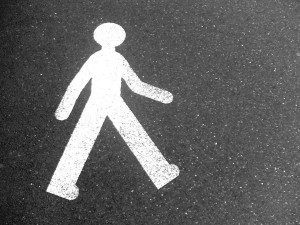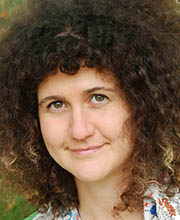On 29th April 2015, 50 academics, researchers, students and invited guests of the School of Archaeology, Geography and Environmental Science gathered to share their experiences and perspectives on the theme of ‘Gender and Fieldwork’. Fieldwork can be broadly defined as the work we do to research the natural and social world. It is also a common activity across all of the disciplines represented in our School, whether as undergraduate archaeology students digging at our field schools in Silchester or Pewsey Vale, on geography fieldclasses to Crete, Dublin or the Lake District, or as postgraduates, researchers and academics working in locations around the world. Gender is a subject of academic study for many of our students and staff. We are fortunate enough to boast colleagues who lead their discipline on ‘gender and archaeology’, research gendered identities in the Caribbean and UK and have been honoured as one of 7 British women geographic ‘foremothers’.
Forming part of the School’s Bronze Athena SWAN Award and our blog ‘SAGE(S) Advice: fieldwork, gender and careers’, the conference offered an opportunity to consider as a School what it means to be an archaeologist, geographer or environmental scientist in the 21st century and what role gender plays in our fieldwork experiences and chosen career paths. Indeed, whilst we have fantastic female role models within our School, the continued proliferation of reports, newspaper articles, blogs and tweets on gender equality issues, as well as initiatives such as Athena SWAN that seeks to ensure adequate opportunities for women in academic life – gender remains very much on the agenda in higher education in 2015. Our conference was a very local contribution to understanding this more fully. For those on Twitter – check out #SAGESfieldwork for tweets from the event.
All the best bits of the SAGES Gender & Fieldwork Conference and the Norma Wilkinson lecture are now gathered in one place! https://storify.com/SAGES_UoR/sages-gender-fieldwork-conference-2015
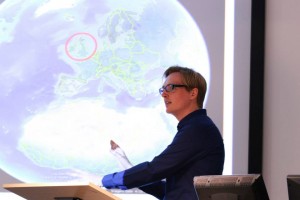
John Carson – Postdoctoral Research Assistant in GES presenting during the ‘meet the professionals’ session
Following a brief introduction from me (as School Equality Officer), our Head of School Professor Roberta Gilchrist introduced our Athena SWAN Bronze Award and asked participants to ‘think creatively’ about gender and its relationship to fieldwork. In particular, she asked our students in the audience to reflect on the theme of gender as they go forward in their careers. Whilst ‘gender’ may not seem relevant as undergraduates, many participants highlighted how once in the workplace it is surprising how gender is a cause for concern, whether relating to equal pay or parental leave, or indeed leadership styles and team working.
To see the Gender and Fieldwork videos shown during the conference see the School’s Youtube channel – https://www.youtube.com/watch?v=-Lf_Uwawyr0&list=PL_bZX3TPZF9cVRnkpyAbH8kdfdKliM-sK&index=1
We began by hearing from 8 colleagues and friends of the School in a ‘meet the professionals’ session where speakers were invited to share their experiences of gender and fieldwork. Our speakers were:
• Sophie Bowlby – Visiting Research Fellow University of Reading – researching social, feminist, retail & urban geography, mobility & disability, care & friendship
• Gill Hey – Chief Executive Officer Oxford Archaeology, University of Reading alumni (History and Archaeology)
• John Carson – Postdoctoral Research Assistant, Geography and Environmental Science – researching Holocene vegetation and climate in the Neotropics
• Amanda Clarke – Research Fellow, University of Reading – Archaeological Field Methods and Techniques, Director of the Archaeology Field School
• Sophie Webb – Soil surveyor and scientist, Reading Agricultural Consultants, University of Reading alumni (MSc Environmental Management 2011)
• Nick Branch – Head of Department of Geography and Environmental Science, Associate Professor in Palaeoecology
• Natalie Clark – Project Manager UK Environmental Observation Framework (UKEOF) – works to improve coordination of the observational evidence needed to understand and managing the changing natural environment
• Ruth Harris – University of Reading Environmental & Sustainability Co-ordinator, University of Reading alumni (Environmental Science MEnvSci).
This was followed by small group discussions where participants reflected on the themes of the conference. I had the pleasure of summing up the event. And I identified 3 key themes that warrant further consideration as we move forward with our Athena SWAN Bronze Award.
First, the importance of the more emotional qualities of fieldwork. Unsurprisingly, our invited speakers and participants spoke with passion, enthusiasm and emotion about their fieldwork activities. Enjoyment and fun relating to fieldwork practices and the scientific endeavour were paramount for many. One speaker said, “There’s nowhere I wouldn’t go to look at soil”. Another said “I love what I do”. The emotional benefits of doing fieldwork could be felt regardless of gender or ability. Indeed, there was also passionate talk about some of the more trying and challenging aspects of being in the field, whether the physical toughness of digging a pit or the mental toughness of interviewing recently bereaved research participants. In addition, I was struck by the audience participation in the sessions and the nods in agreement and laughter that surrounded many of the gender and fieldwork stories shared across the day. Fieldwork is clearly something our School is passionate about.
Second, as a human geographer, I learnt early on in my career to pay attention to my positionality as researcher and of those I research with. Here Sophie Bowlby, a human geographer at Reading, highlighted the importance of understanding how social location and personal history influences what we see as researchers and how we are seen. For those in our School working in the natural sciences this might have been a new way of thinking about how we are perceived in the field – whether by local collaborators, clients, field assistants or gatekeepers. In the context of ‘gender equality’ initiatives such as Athena SWAN and how we support each other – this is something we need to discuss further. One female speaker described how her fieldwork involved doing environmental assessments and digging test pits. Many of her clients were shocked to find her digging the pit, offering on many occasions to do it for her. Sometimes, we challenge the expectations of those we work with in the course of our fieldwork.
Third, and this is more forward-looking, our discussion was very focussed on the global North, but many of us in our School conduct fieldwork in the global South – whether as human geographers, physical geographers, archaeologists or environmental scientists. The opportunities and challenges are different, as one colleague pointed out – with different social structures, religious beliefs, and modes of communication, to name but a few. Here attention to positionality is vital, but so is thinking about how we – as a School – support our staff and students.
In sum, the event was a celebration of fieldwork. Yet the conference highlighted how the theme of gender equality persists and how gender equality work requires persistence. Personally, I felt there was, as a result of the conference, a renewed commitment by members of our School to a continued culture of equality for all. 8 months ago the Gender and Fieldwork Working Group set out to engage our School on the theme of gender through our varied experiences of fieldwork – I think we fulfilled our aim. Hands were raised and thoughts shared on the need to consider further themes of male caring responsibilities, work/life balance, female approaches to leadership, students with caring responsibilities, and staff/student wellbeing. Our work as a School continues…
The overall winner of the Fieldwork Photograph competition was George Hibberd – congratulations George! All of the photographs are now on display in the Sorby Room (Wager building) and Russell Meeting Room (Russell building).
Following the conference the School held the Annual Norma Wilkinson Lecture – Into the treasures of the snow: field measurements of snow density in Greenland and Antarctica. This year the speaker was Dr Elizabeth Morris OBE. Dr Morris was the first woman to work deep field in the Antarctic with the British Antarctic Survey (BAS), and for 13 years was Head of the Ice and Climate Division at BAS (1986-1999). She is currently a Senior Associate at the Scott Polar Research Institute, University of Cambridge. Her research is concerned with the mass balance of polar ice sheets, and their response to climate change and is based upon field observations, remote sensing techniques and modelling.
Steve Gurney provides some reflections on this years lecture:
This year we were extremely lucky to have Dr Liz Morris speaking on the subject of snow and the important role it plays in our understanding of polar ice sheets, as found in Greenland and Antarctica. This is ‘big science’, since these days it involves satellite observations from a purpose-built satellite (‘CryoSat-2’ – which cost 140 million Euros) as well as lengthy field campaigns in remote and inaccessible regions (costly, although much cheaper than a satellite). Liz convinced us that fieldwork was still a vital component of this research and continues to play a role in both ice core geochemistry and ice sheet dynamics. These are both topics that we desperately need to research, since they are strongly linked to the science of global climate change. Liz also described how gender and fieldwork in the polar regions has changed over the course of her career. She clearly faced very real discrimination in the early days, but fortunately, the reality now is very different.





